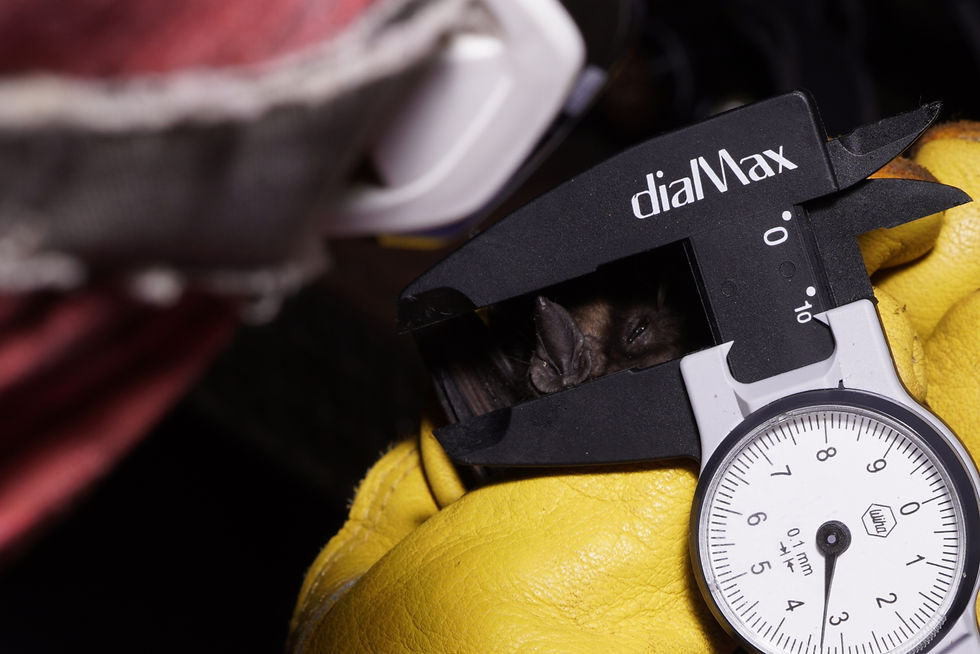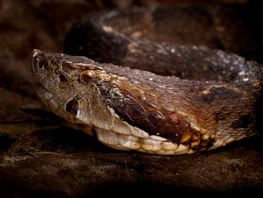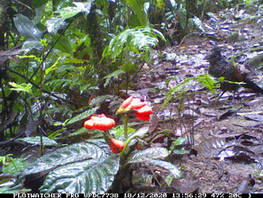Nature Reserve & Biological Station
Bat Research Program
A special focus of our research at Un poco del Chocó lies on the study and monitoring of the diversity of bats in and around our reserve. From January to March, we capture bats with the use of mistnets to collect data on their diversity, abundance, and community assemblage.




Tackling data deficiencies in conservation
Bats are in the order Chiroptera- the second most speciose order of mammals in the world! 183 of those species are found within Ecuador. Bats are essential for the healthy function of ecosystems, through their provision of seed dispersal, pollination, pest control and nutrient cycling. However, bat research in the Chocó is not common and much about this volant, nocturnal order remains to be discovered in the region. This year, we decided to tackle some of these data gaps by implementing a seasonal, long term monitoring program to find out more about the diversity, abundance and community assemblage of understory bats in and around our land. In 15 nights of mist netting, we sampled 200 bats from 28 species. Species showed diverse feeding strategies, from nectarivory (nectar-feeding) to frugivory (fruit-eating), insectivory (insect-eating) and even sanguivory (blood-feeding). Once bats were captured in mist nets, we identified the species through a variety of morphological traits such as forearm length, dentition and fur patterning. Alongside diversity and morphological measurements, we also record life history data, such as age, sex, and reproductive status, to gather more information about population and reproduction dynamics of our bat community. We will be continuing the project between January and March 2026, and expanding to include some broader conservation topics.
Diet and a changing landscape
What do fruits do bats prefer to eat? How do their feeding habits change when natural forest is replaced by monospecific agriculture? How is bat diversity affected by a changing landscape?
These are several questions we hope to answer through a new section of our monitoring project. In 2026 we will begin mist netting in an abandoned monoculture plantation as well as in the forest. We will use results to analyse how bat diversity and abundance varies between different types of land.
We will also be taking faecal samples from bats captured in forest and monoculture, to see how diet changes in response to changes in resource availability associated with land type.

Overall, this will help us understand how bats respond to a changing landscape and habitat loss. By understanding the adaptability of a bats diet to changing food availability, we can determine which species are most at risk from habitat loss, and associated loss of strict food sources. We hope to identify important fruit resources of bats, and incorporate them into reforestation projects, to encourage the return of frugivorous bats to recovering forest. This topic is important for bat conservation, because it will help identify at risk species, and test a reforestation method which will help expand food and habitat resources for our bat community!
Are you interested in joining our bat research program?
Great!! There are many different ways of supporting our work!
>> You can participate in our ongoing research programs as an intern and conduct a biological internship in Tropical Field Studies & Conservation.
>> You can apply to conduct your own research question incorporating bat monitoring data as part of a university thesis.

What could you learn?
-
Learn how to install mist nets. This includes choosing 'good' net locations, installing and deploying nets.
-
Learn how to safely manipulate a bat for research purposes. This includes taking morphological and life history measurements.
-
Learn how to extract bats from mist nets
-
Learn how to use morphological characteristics to identify species with literature and field guides.
-
Assist with faecal sample collection for dietary analysis.
-
Assist with the reforestation of degraded agricultural land.
-
Assist with fruit counts and flower transects to understand food resource availability and diversity in and around the reserve.
This opportunity is suitable for anyone wishing to learn a variety of field skills used in bat monitoring and conservation. Whether you have never been in the field before, or have volunteered at your local bat group back home, or are looking to use this experience as part of a university project or thesis, we would love to hear from you! Get in Touch!
Your life as a bat research intern
- In the morning you could be entering data and organising samples from the night before, or assisting with a fruit and flower transect to collect data on food availability.
- In the afternoon you could be doing a workshop to boost you bat ID skills and handling techniques, or you could be helping clean and install nets at a new location for a coming night of sampling.
-In the night you could be headed out into the forest to sample bats using mist nets. You could be learning to handle bats, help extract them from nets, record data or organise the collection of faecal samples.
From our Blog....


















